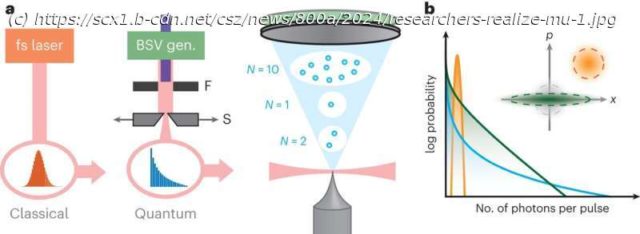Strong field quantum optics is a rapidly emerging research topic, which merges elements of non-linear photoemission rooted in strong field physics with the well-established realm of quantum optics. While the distribution of light particles (i.e., photons) has been widely documented both in classical and non-classical light sources, the impact of such distributions on photoemission processes remains poorly understood.
Strong field quantum optics is a rapidly emerging research topic, which merges elements of non-linear photoemission rooted in strong field physics with the well-established realm of quantum optics. While the distribution of light particles (i.e., photons) has been widely documented both in classical and non-classical light sources, the impact of such distributions on photoemission processes remains poorly understood.
Researchers at Friedrich-Alexander-Universität Erlangen-Nürnberg (FAU) and the Max Planck Institute for the Science of Light recently set out to fill this gap in the literature, by exploring the interactions between light and matter with a non-classical light source. Their paper, published in Nature Physics, demonstrates that photon statistics of the driving light source are imprinted on the electron number statistics of emitted electrons from metal needle tips, an observation that could have interesting implications for the future development of optical devices.
« The field of strong field physics is now highly developed, as apparent from the 2023 Nobel prize in Physics, » Jonas Heimerl, co-author of the paper and researcher at FAU, told Phys.org. « This physics is not limited to atoms but also happening at metal surfaces like metal needle tips.
Home
United States
USA — IT Researchers realize multiphoton electron emission with non-classical light






